The NVIDIA GeForce GTX 1080 Preview: A Look at What's to Come
by Ryan Smith on May 17, 2016 9:00 AM ESTGaming Performance, Power, Temperature, & Noise
So with the basics of the architecture and core configuration behind us, let’s dive into some numbers.
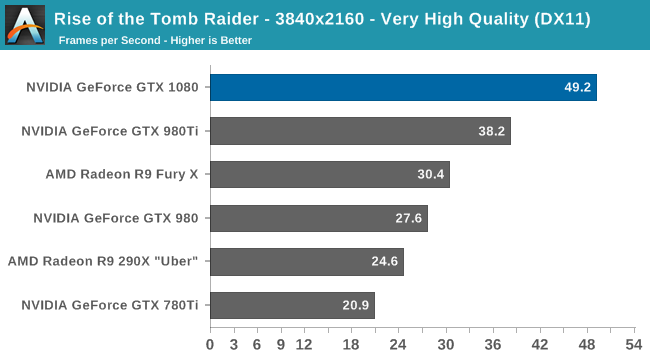

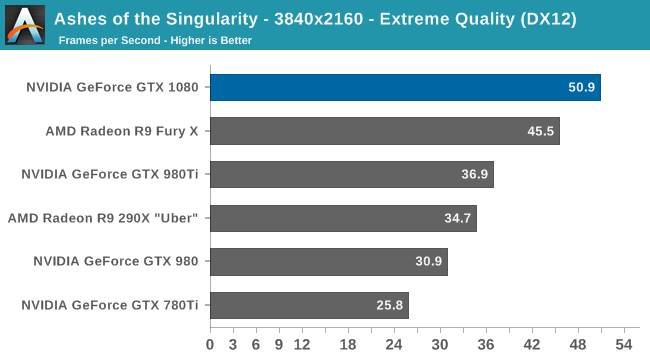

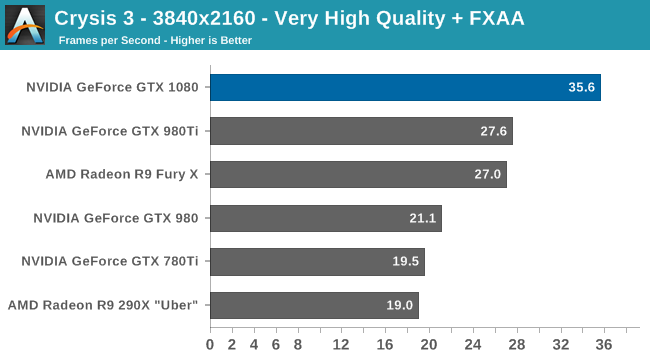
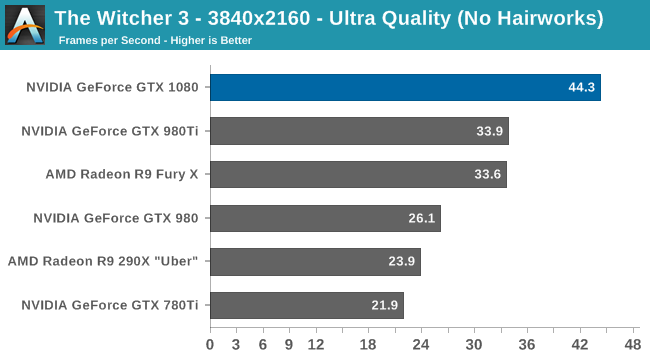
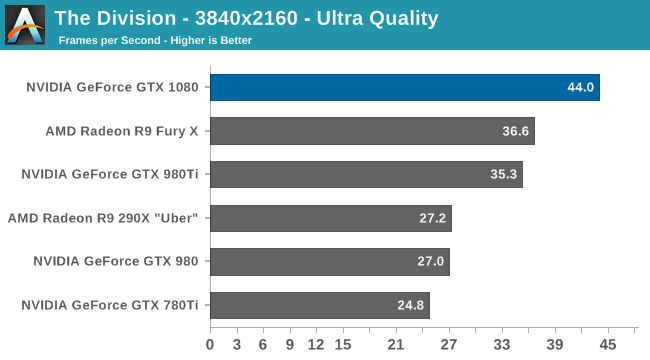
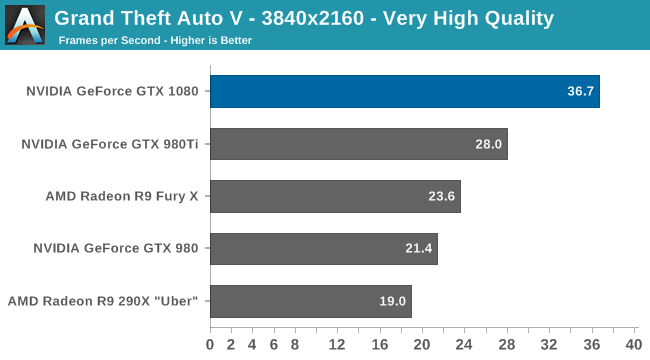
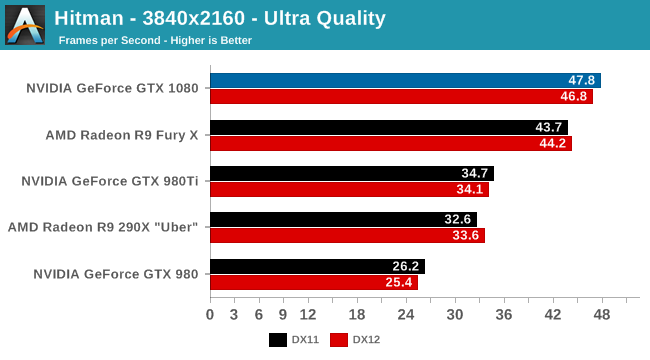
As the first high-end card of this generation to launch, NVIDIA gets to set the pace for the market. At the risk of being redundant the GTX 1080 is now the fastest single-GPU card on the market, and even at 4K it wins at every single gaming benchmark, typically by a good margin. In practice we’re looking at a 31% performance lead over GTX 980 Ti – the card the GTX 1080 essentially replaces – with a similar 32% lead over AMD’s Radeon R9 Fury X. Meanwhile against the slightly older GTX 980, that gap is 70%.
On a generational basis this ends up being very close to the 74% jump in 4K performance going from the GTX 680 to GTX 980. And although the pricing comparison is not especially flattering for NVIDIA here, it should be evident that NVIDIA isn’t just looking to sell GTX 1080 as an upgrade for high-end Kepler cards, but as an upgrade for GTX 980 as well, just 20 months after it launched.
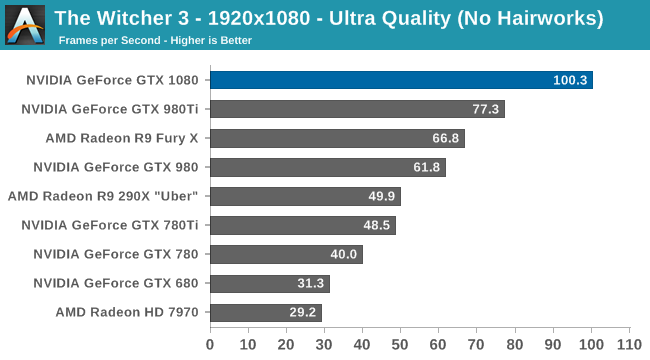
I also wanted to quickly throw in a 1080p chart, both for the interest of comparing the GTX 1080 to the first-generation 28nm cards, and for gamers who are playing on high refresh rate 1080p monitors. Though this will of course vary from game to game, roughly speaking the GTX 1080 should be 3x faster than the GTX 680 or Radeon HD 7970. This is a good reminder of how architectural efficiency has played a greater role in past years, as this is a much larger gain than we saw jumping from 55nm to 40nm or 40nm to 28nm, both of which were much closer to the historical norm of 2x.

Meanwhile when it comes to power, temperature, and noise, NVIDIA continues to execute very well here. Power consumption under Crysis 3 is some 20W higher than GTX 980 or 52W lower than GTX 980 Ti, generally in line with NVIDIA’s own TDP ratings after accounting for the slightly higher CPU power consumption incurred by the card’s higher performance. The end result is that GTX 1080 is a bit more power hungry than GTX 980, but still in the sweet spot NVIDIA has carved out in the gaming market. Broadly speaking, this amounts to a 54% increase in energy efficiency in the case of Crysis 3.
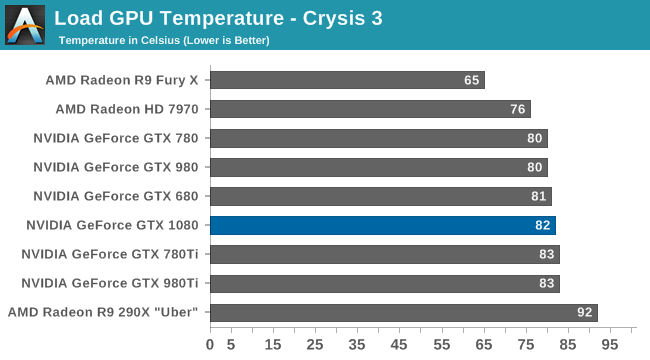
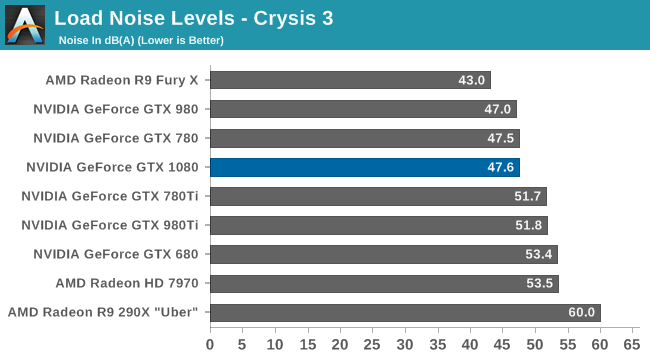
Otherwise from a design perspective the GTX 1080 Founders Edition carries on from NVIDIA’s high-end GTX 700/900 reference design, allowing NVIDIA to once again offer a superior blower-based solution. NVIDIA’s temperature management technology has not changed relative to Maxwell, so like their other cards, the GTX 1080 tops out in the low 80s for load temperature. More significantly, at 47.5 db(A) load noise, the card is on par with the GTX 780 and half a dB off of the GTX 980.
Ultimately NVIDIA has designed the GTX 1080 to be a drop-in replacement for the GTX 980, and this data confirms just that, indicating that GTX 1080’s much higher performance comes with only a slight increase in power consumption and no meaningful change in temperatures or acoustics.


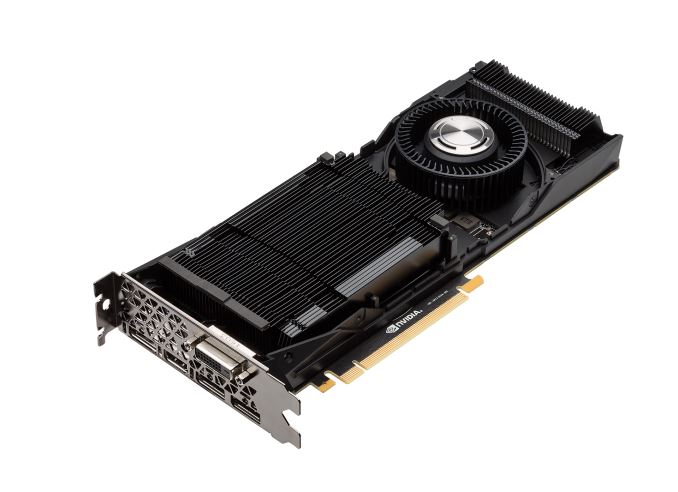








262 Comments
View All Comments
HollyDOL - Wednesday, May 18, 2016 - link
So, to summarize... it's more powerful than I expected and less powerful than I hoped for.HollyDOL - Wednesday, May 18, 2016 - link
Oh btw Ryan thx for early data, helped me alot.chrisdent - Wednesday, May 18, 2016 - link
Benchmark comparisons?When putting a new card up against the older cards, are the numbers for the older cards from the latest drivers available or year old numbers that may have change with driver updates?
nevcairiel - Wednesday, May 18, 2016 - link
That was answered elsewhere in the comments, its all on the newest drivers.WereCatf - Wednesday, May 18, 2016 - link
I am much more interested in knowing if Pascal brings any improvements to NVENC, something that I have yet to see discussed anywhere.dragonsqrrl - Wednesday, May 18, 2016 - link
Yes, quite a few:http://www.tomshardware.com/reviews/nvidia-geforce...
It now supports full fixed function HEVC 10/12 bit encode/decode, up to 2x 4K 60Hz, 1x 4K 120Hz, or 1x 8K 30Hz, at up to 320 Mbps.
QuinQuix - Wednesday, May 18, 2016 - link
I think the author may have missed that what matters in node shrinks is the relative node size, not the absolute difference of the shrink.Meaning it's not surprising that 28nm to 16nm is a larger performance increase than going from 58 to 40. Comparatively speaking, the transistors shrunk much more in the latter.
Yojimbo - Wednesday, May 18, 2016 - link
That's true, except these days you can't go purely by those numbers.FMinus - Thursday, May 19, 2016 - link
except it still pretty much is a TSMC 20nm process with the fancy 16nmFF name tagged on it.Tuvok86 - Wednesday, May 18, 2016 - link
finally a card (this or 1070) worth retiring my 7970ghz for